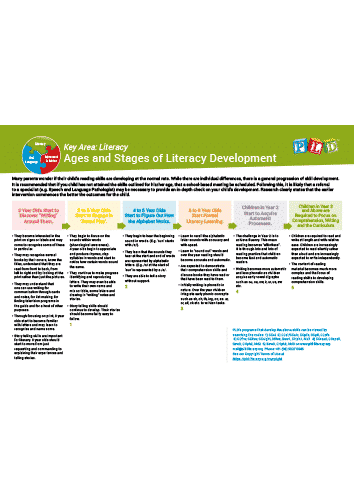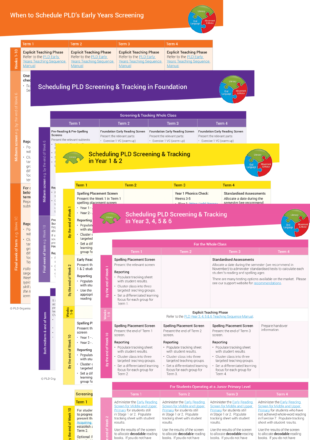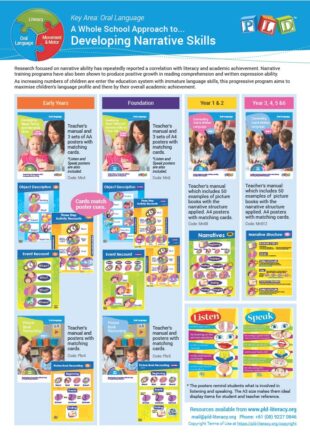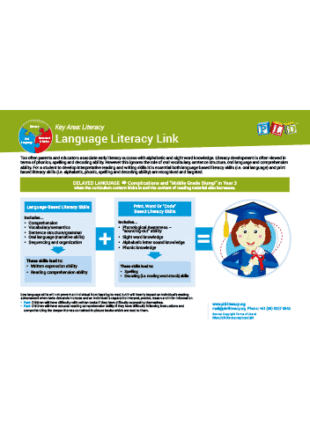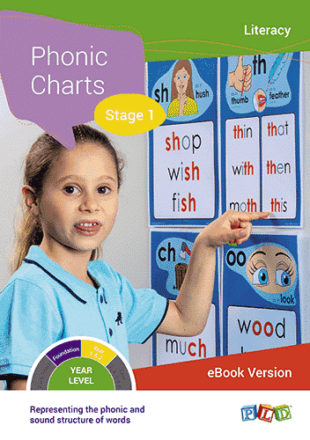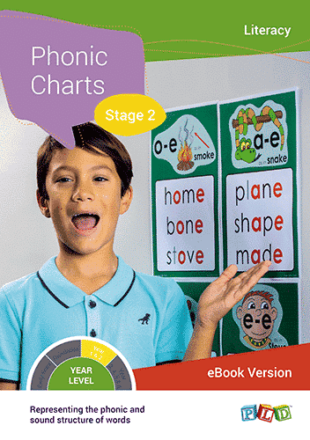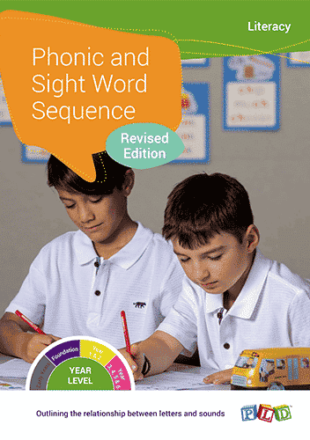Phonic Charts – Stage 2 contains 18 cards that focus on the following sounds: ‘a-e’ as ‘ay’, ‘e-e’ as ‘ee’, ‘i-e’ as ‘igh’, ‘o-e’ as ‘oa’, u-e as ‘y+oo’, u-e as ‘oo’, oa, ‘ow’ as ‘oa’, ‘oe’ as ‘oa’, ‘ie’ as ‘igh’, ‘ue’ as ‘oo’, ‘ue’ as ‘y+oo’, ‘ew’ as ‘oo’, ‘ew’ as ‘y+oo’, ‘ea’ as ‘ee’, ‘ow’ as ‘ou’, ou, ‘aw’ as ‘or’, ‘ir’ as ‘er’, ‘ur’ as ‘er’, ‘y’ as ‘igh’, ‘y’ as ‘ee’.
Features:
The charts can be utilised for the purpose of display or as flash cards.
Extend phonic knowledge, whilst highlighting the sound structure and the vocabulary nature of the words.
Writing is supported when students have access to environmental print, which consolidates concepts covered.
Each set of charts is based directly upon the PLD’s Phonic & sight word sequence
Other phonic posters, available in print or as eBooks, in this series:
Alphabet Sound Charts – Foundation Font
Phonic Charts – Stage 1
Phonic Charts – Stage 3
Phonic Charts – Stage 4
Sound Wall Charts:
Sound Wall Charts for the Early Years (26 A4 coloured charts which focus on the alphabet)
Sound Wall Charts for Foundation (42 A4 coloured charts which focus on the alphabet and Stage 1 digraphs)
Sound Wall Charts for Year 1 (49 A4 coloured charts which focus on Stage 1 & Stage 2 digraphs)
Sound Wall Charts for Year 2 & 3 (71 A4 coloured charts which focus on Stage 1, Stage 2 & Stage 3 digraphs)
What is a sound wall display?
A sound wall is an interactive display of phonic concepts and words that is organised by and/or emphasises individual sounds (phonemes). Commonly there is one wall for consonants and one for vowels.
Sound walls focus on the formation of phonemes which gives young students a structure that helps them understand the foundation of language and written literacy. As we know from current research about the science of reading, children learn to read through the application of orthographic mapping, a speech-to-print process where letters are mapped to known speech sounds. Teachers need to harness this modern understanding by using sound wall displays as a teaching and learning tool in their classrooms to support the process of learning to read and spell.



